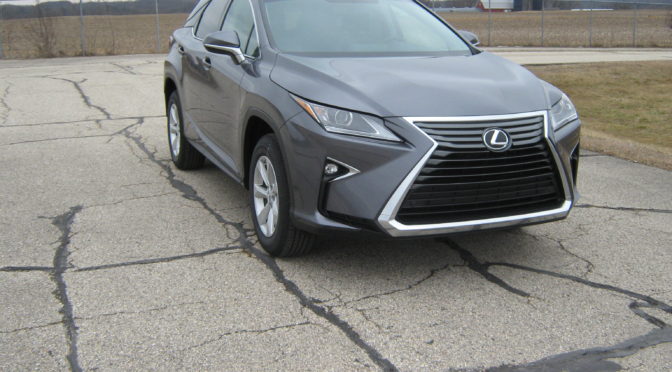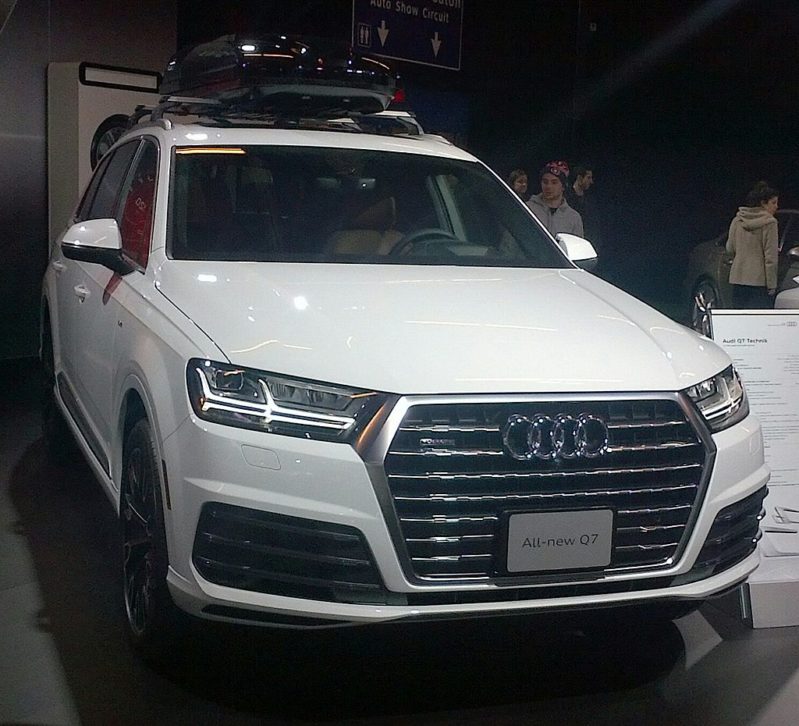
Side impact collisions are among the most dangerous kinds of collisions we ever face in a passenger-sized vehicle. In order to keep our loved ones safe if we’re ever unfortunate enough to be involved in a t-bone, it helps to have some of the latest technology on our side. To that end, I’ve spent the last several years compiling lists of vehicles in various classes with the best crash test performance in side impacts to help parents and families make better new and used buying decisions. Previous articles in this series are below:
Side Impact Safety in 2015
The safest cars for side impact survival.
The safest minivans for side impact survival.
The safest small cars for side impact survival.
The safest SUVs and crossovers for side impact survival.
Side Impact Safety in 2016
The safest small SUVs and crossovers for side impact survival.
The safest family cars for side impact survival.
The safest minivans for side impact survival.
The safest small cars for side impact survival.
How dangerous are side impact collisions compared to frontal or rear collisions?
To put it simply, side impact collisions are the collisions that are most likely to take your life or the life of a loved one, when compared with front-, and rear-end collisions. From doing the math in an earlier post on side impact collisions, we know that even though only around 1 out of every 5 collisions involve side impacts, they lead to 1 out of every 3 vehicle occupant deaths in multiple vehicle collisions. In comparison, basically 1 out of 2 collisions involve frontal impacts, which lead to around 1 out of every 2 multiple collision deaths. Even more dramatically, while more than 1 out of every 4 collisions are rear enders, they only result in around 1 out of every 12 multiple collision deaths.
Looking at the numbers shows us side impacts are the collisions most likely to be fatal, even though they’re the least common. Knowing this, it’s worth figuring out how to reduce our risks of dying from one.
How to keep from dying in a side impact collision – what options do we have?
Unfortunately, if you live in the United States, you live in a country that isn’t the most willing to make changes to make our roads safer for everyone. In the US, you can drink much, much more before you’re considered drunk than you would in many parts of Europe (where the driver death rates are lower). Similarly, you don’t really have restrictions on how big your vehicle can be, regardless of how little experience you have as a driver. This isn’t the case in a number of other countries. You also live in a country that turns a blind eye toward many speed limits and is vehemently opposed to traffic cameras, despite their prevalence in countries with lower crash death rates. And of course, you’re also in a country where it’s hard to travel long (or short) distances inexpensively without driving.
I’ve written about some of these issues in past articles, such as one on why Swedish roads are among the safest in the world, and another on why driving in Europe is safer than driving in the US. I’ll have more articles soon about the things we can learn from other countries when it comes to driving safely (e.g., learning from Norway when it comes to child safety, looking into why Iceland has so few traffic deaths per year, and what Norway does differently to make its roads among the safest in the world for all drivers).
However, until we’re willing to make a number of necessary changes, if you’re invested in keeping your family safe from death in t-bone collisions, I’d recommend you:
1.) Avoid driving (e.g., by using public transportation or by cycling or walking…eventually this leads to a critical mass where everyone is safer).
2.) Limit driving (by the same measures above and by combining trips).
3.) Drive the most side-impact-resistant vehicles possible.
Ultimately, to truly bring an end to side impact collisions, as well as to all collisions, we’re going to need to be forced to invest in the first two measures. I’d consider self-driving or autonomous vehicles to be part of “avoiding driving,” even though those aren’t going to eliminate collisions completely until the vast majority of vehicles on the road are no longer being driven by humans (the critical mass argument).
However, unless you’re in a position to completely follow step 1, you’ll need to focus on 2 and 3. Step 2 isn’t always feasible either, so this post focuses on Step 3, and deals specifically with choosing the safest SUVs and crossovers available for side impact protection in the US in 2016. I realize 2016 is close to an end, but this is also means this is the best time of the year to get discounts on current year models if you’re interested in the latest technology. Fortunately, as you’ll see below, you don’t always need the newest vehicles to be as safe as currently possible. You just need to know who’s doing the best job.
This post focuses on SUVs and crossovers and the best ones to be in if you’re unfortunate enough to be in a side impact collision.
Calculating which SUVs are the safest for side impact collisions by structural integrity (crush distance)
I’ve written about the math behind these calculations in previous posts, such as in the relevant articles on surviving side impacts in cars, minivans, and SUVs and crossovers, so hop back to those articles to read about this in detail. The short version is that the IIHS runs a side impact test. It simulates a 3300 lb SUV crashing into the side of a vehicle at 31 mph, or 143.7KJ of kinetic energy. Every vehicle deforms somewhat at the B-pillar when absorbing such an impact, and there’s a subscore in the IIHS test known as the “structure and safety cage” looks into how close the B-pillar intrudes into the center of the driver’s seat during the collision. Less intrusion is better. Let’s see who has the least intrusion right now in the family car market.
I searched through the test scores of every SUV and crossover currently available in the US to make this best-of list. I’m defining SUVs and crossovers as any vehicle that’s not a car, pickup truck, minivan, or cargo van yet capable of transporting at least five individuals. To put it simply, these are the vehicles the IIHS classifies as small, mid-sized, or large SUVs. I also made the lower threshold for inclusion in the list 23 cm of intrusion resistance, which knocked out a lot of vehicles that were present the last time I made this list. These are the best of the best.
Keep in mind that the IIHS continually updates their side impact information while gathering additional information, so in a few months, it’s likely that these numbers may be slightly different, and I’ll have another article to reflect those changes. All data is accurate as of late December 2016, and all images are either from yours truly or courtesy of Wikipedia.
The 7 safest SUVs and crossovers for side impact collisions in 2017
 27.5 cm – 2017 Audi Q7.
27.5 cm – 2017 Audi Q7.
The current generation Audi Q7 is the safest SUV or crossover you can buy today in the US when it comes to side impact crash protection, based on its 27.5 cm of crush protection. As of this writing, no other SUV or crossover does a better job, and to be even more direct, no other vehicle does any better, out of all cars, minivans and SUVs currently on the market. In other words, when it comes to side impact protection, Audi sets the benchmark for every other vehicle to aspire to at this time. To put it in yet another way, if a Ford Escape (the best of the small SUVs for side impact resistance) crashed into you at 31 mph while you were driving a Q7 there’d be nearly a full foot of space between the center of your seat and the crushed B-pillar after the collision.
That’s impressive.
The new Q7 is also one of many Top Safety Pick+ choices on this list, which basically means that it features good scores in every crash test currently performed by the IIHS, as well as a good score in front crash prevention when equipped with optional equipment. Not every SUV on this list is sa TSP+, however, so shop carefully.
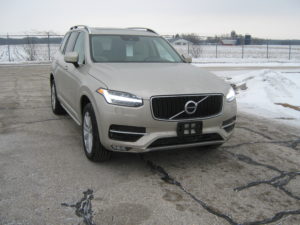 26 cm – 2016 Volvo XC90.
26 cm – 2016 Volvo XC90.
The current generation Volvo XC90 is hot on the heels of the Q7 with 26 cm of side impact protection, even though it also suffers from an only “acceptable” torso subscore within the overall side impact score. However, structurally, it’s a sound SUV, and I look forward to seeing how it performs in the ultimate measure of driver safety–the next set of driver death rate results a few years from now.
It’s worth noting that the previous generation of the XC90 in the 4WD trim (specifically the 2008-2011 model years) was one of the various vehicles to make the IIHS’ “zero list,” where no drivers were estimated to have lost their lives in a three year driving window. That generation of the XC90 tested at 9.5 cm of intrusion resistance.
My full 3 across car seat guide to the XC90 is available here.
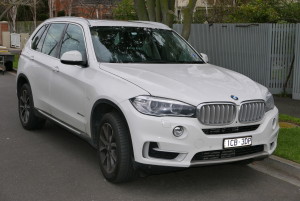 25 cm – 2014-2016 BMW X5.
25 cm – 2014-2016 BMW X5.
Immediately after the XC90 comes the BMW X5 with a stellar intrusion-resistance score of 25 cm. Given BMW’s history of attention to safety, this isn’t surprising, but it’s still impressive.
The X5, however, is one of the SUVs on this list that is not a Top Safety Pick+, which is due to the fact that the only crash tests the IIHS has performed on it are the moderate overlap frontal test and the side impact test. The small overlap test, roof test, and head restraint tests are yet to be performed. The IIHS has yet to offer an explanation why.
My full 3 across car seat guide to the X5 is available here.
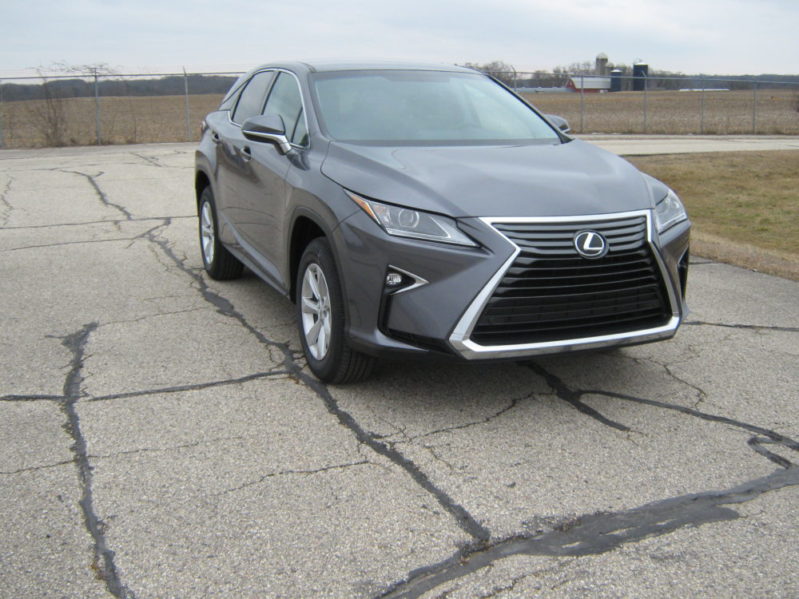 24 cm – 2016 Lexus RX.
24 cm – 2016 Lexus RX.
The Lexus RX is one of only three vehicles on the list not hailing from a German automaker (the other two are the Volvos, which are Chinese-owned but Swedish-run), and it makes a strong showing with its intrusion score of 24 cm. The RX also stakes its claim as a Top Safety Pick+ and is easily going to be the most reliable vehicle on this list.
As was the case with the XC90 above, it’s worth noting that the previous generation of the RX in the 4WD trim (specifically the 2010-2011 model years) was one of the various vehicles to make the IIHS’ “zero list”, where no drivers were estimated to have lost their lives in a three year driving window. Six drivers were estimated to have died in the 2WD trim level. That generation of the RX tested at 17.5 cm of intrusion resistance.
My full 3 across car seat guide to the RX is available here.
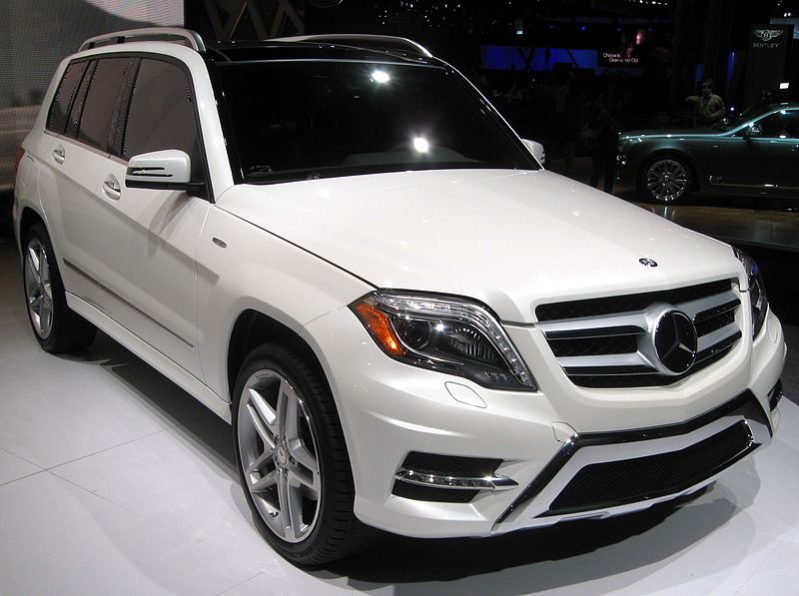 24 cm – 2011-2015 Mercedes-Benz GLK (e.g., GLK 350).
24 cm – 2011-2015 Mercedes-Benz GLK (e.g., GLK 350).
Hot on the heels of the X5 is the GLK crossover by MB with a highly impressive intrusion score of 24 cm, equaling that of Mercedes-Benz’s E-Class sedan. Given MB’s history of developing safe vehicles, this isn’t much of a surprise. What’s more of a surprise is the fact that the GLK crossover design is at least 4 years old in this generation, meaning it has been providing an exceptional amount of safety for years that other vehicles are just beginning to approach, never mind exceed. I look forward to seeing the GLK show up on a driver death rate study; MB will need to sell more of them for it to make an appearance.
It’s also worth noting that the GLK is not a TSP+ due to the lack of a small overlap score.
My full 3 across car seat guide to the GLK is available here.
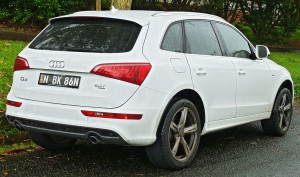 23 cm – 2009-2016 Audi Q5.
23 cm – 2009-2016 Audi Q5.
Audi makes their second appearance on the list with the Q5, which holds the impressive distinction of being the oldest model to make the top list with a design dating back to 2009. The 2015 edition was also updated with a reinforced front-end to result in a good small overlap score. I look forward to seeing the Q5 show up on a driver death rate study; Audi will need to sell more of them for it to make an appearance. However, given their position in the market as an alternative to MB and BMW, I doubt they’ll lose sleep wondering if they sell enough Q5s to show up in death rate studies, although the A4 and A6 pop up (and do very well) from time to time.
My full 3 across car seat guide to the Q5 is available here.
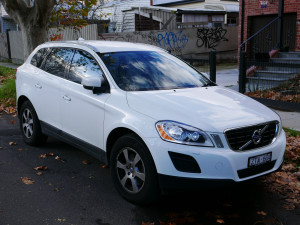 22 cm – 2010-2016 Volvo XC60.
22 cm – 2010-2016 Volvo XC60.
Volvo makes their second appearance on this list with the XC60. As with the Q5, I look forward to seeing the XC60 show up on a driver death rate study; Volvo will need to sell more of them for it to make an appearance. Given the appearance of the XC90 in the two most recent studies, I’m hopeful this means Volvo’s US car sales are on the upswing. Along with BMW, Mercedes, Subaru, and Audi, Volvo puts an awful lot of their research and development into safety technologies these days.
My full 3 across car seat guide to the XC60 is available here.
How to choose an SUV to keep you safe in side impact crashes
In conclusion, what does this all mean? Should you sell your current SUV and buy one of the above immediately? Is every other SUV on the road just not good enough?
Well, not exactly. There are a number of other great vehicles that I didn’t include on the list to save time that were literally only a centimeter or two away from appearing on the list. Ford, for example, came close with the Edge, its badge twin the Lincoln MKX, and the Explorer with 20, 20, and 19.5 cm respectively. The newly released Buick Envision clocked in at 21 cm, and the Cadillac XT5, an updated SRX, clocked in at 20 cm. There are plenty of other safe choices out there; I just focused on the very best-performing ones.
The takeaway message is that it’s worth looking beyond the overall “good” score and diving into the structural integrity subscore when searching for safe cars for this particular kind of crash. Of course, you’ll start with looking for airbags and the overall “good” score, but beyond that, if you’re choosing between two vehicles that seem good on paper, dive into this subscore and you might be surprised at what you find. And remember that just because a car isn’t anywhere near the top numbers on this list doesn’t mean it’s not safe.
Keep in mind, too, that two of the vehicles on this list, the XC90 and the RX, had previous generations that made the IIHS’ “zero list” with lower levels of side impact intrusion protection. The XC90, in particular, had 9.5 cm when tested, a figure that wouldn’t put it anywhere near the leading vehicles in the list above. Yet no drivers were reported to have died while driving one during the observed years.
We can’t control everything. The safest option is still not driving at all, followed by driving as little as possible. But if you’ve got to drive, drive safely, and do your best to choose a safe vehicle. To that end, my safe family vehicle analyses for cars and SUVs are worth reading.
I hope you enjoyed reading this as much as I enjoyed writing it. It’s exciting to see where we’re headed in vehicle safety these days. I’ll have followup articles soon comparing comparing car and SUV safety along the same metrics. Stay tuned, remember to avoid common mistakes parents make with car seats, and check out some 3 across car seat guides while you’re here.
If you find the information on car safety, recommended car seats, and car seat reviews on this car seat blog helpful, you can shop through this Amazon link for any purchases, car seat-related or not. Canadians can shop through this link for Canadian purchases.

